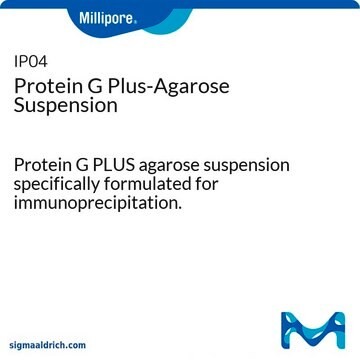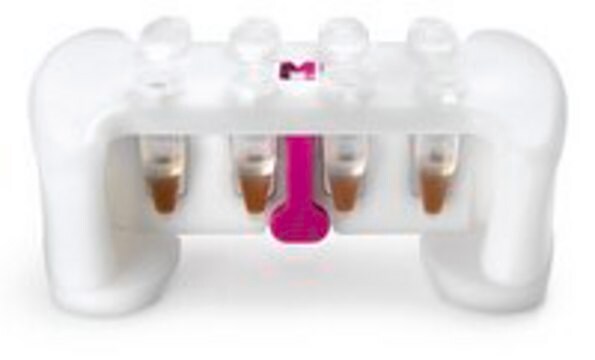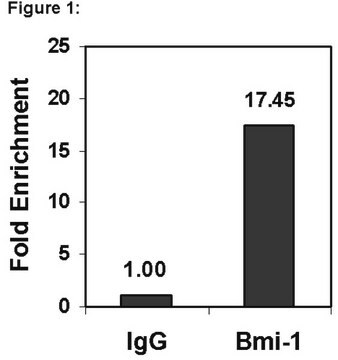IP10
Protein G Plus/Protein A-Agarose
A mixture of Protein G PLUS and Protein A covalently conjugated to agarose. Useful for purification of IgG from biological fluids.
Synonym(e):
Protein G/Agarose
About This Item
Empfohlene Produkte
Form
slurry (Liquid)
Enthält
≤0.1% sodium azide as preservative
Hersteller/Markenname
Calbiochem®
Lagerbedingungen
do not freeze
Methode(n)
protein purification: suitable
Eignung
suitable for microbiology
Versandbedingung
wet ice
Lagertemp.
2-8°C
Allgemeine Beschreibung
Anwendung
Warnhinweis
Physikalische Form
Sonstige Hinweise
Recommended Protocol for IgG Purification
Buffers
All concentrations stated are for working solutions, not the 10X concentrates. Caution: sodium azide is poison.
• Binding/Washing Buffer: 100 mM sodium phosphate pH 7.0, 150 mM sodium chloride, 5 mM sodium EDTA, 0.01% sodium azide.
• Elution Buffer A (see Note section): 500 mM ammonium acetate pH 3.0, 0.01% sodium azide.
• Elution Buffer B: 10 mM glycine/HCl pH 3.0, and 0.01% sodium azide.
• Neutralization Buffer: 500 mM Tris Base, 0.01% sodium azide.
• Storage Buffer: 100 mM sodium phosphate, pH 7.0, 0.01% sodium azide.
Protocol
A. Clean Up and Concentration
Ascites and serum should be clotted at room temperature, refrigerated at 4°C overnight (to allow the clot to shrink and lipids to separate), and centrifuged multiple times to remove all clotted protein and lipid. Remove the lipid from the top of the centrifuge tube with a glass rod or small wooden stick. Tissue culture media should be centrifuged or filtered to remove aggregates.
IgG can be concentrated and partially purified by use of an ammonium sulfate precipitation step. Add ammonium sulfate to 50% saturation (313 g per L) with stirring and check the pH adjusting to 7.0 by addition of 1 M HCl or NaOH. Centrifuge to collect precipitated immunoglobulin, dissolve in binding buffer and dialyze against the same buffer.
B. Purification
1. Pack a column with the Agarose Conjugate.
2. Wash with about 20 column volumes Washing/Binding Buffer until pH of eluate is 7.0.
3. If IgG has not been previously dialyzed against binding buffers dilute or dialyze IgG-containing sample into the Washing/Binding Buffer (pH 6.5-7.5).
4. Load sample onto column.
5. Wash with Washing/Binding Buffer until the absorbance of the eluate at 280 nm approaches background level.
6. Wash with Elution Buffer A to elute IgG, and collect fractions until A280 returns to background levels.
7. Wash with Elution Buffer B, and collect fractions until A280 returns to background. Most IgG should elute with buffer A.
8. Neutralize eluted IgG fractions by addition of an equal volume of neutralization buffer and check the pH with pH paper. For best results, neutralize eluate promptly.
9. To re-use the column immediately, repeat procedure from Step 2.
10. To prepare the column for storage, wash column with 5 column volumes of Elution Buffer B.
11. To store column wash with 30 column volumes storage buffer; then seal column outlets and store in refrigerator.
12. Quantitate the purified IgG using the formula:
Absorbance at 280 nm/1.4 = Concentration (mg/ml).
To make Elution Buffer A, start with acetic acid and adjust the pH to 3.0 with ammonium hydroxide.
Rechtliche Hinweise
Lagerklassenschlüssel
11 - Combustible Solids
WGK
WGK 1
Flammpunkt (°F)
Not applicable
Flammpunkt (°C)
Not applicable
Analysenzertifikate (COA)
Suchen Sie nach Analysenzertifikate (COA), indem Sie die Lot-/Chargennummer des Produkts eingeben. Lot- und Chargennummern sind auf dem Produktetikett hinter den Wörtern ‘Lot’ oder ‘Batch’ (Lot oder Charge) zu finden.
Besitzen Sie dieses Produkt bereits?
In der Dokumentenbibliothek finden Sie die Dokumentation zu den Produkten, die Sie kürzlich erworben haben.
Unser Team von Wissenschaftlern verfügt über Erfahrung in allen Forschungsbereichen einschließlich Life Science, Materialwissenschaften, chemischer Synthese, Chromatographie, Analytik und vielen mehr..
Setzen Sie sich mit dem technischen Dienst in Verbindung.








